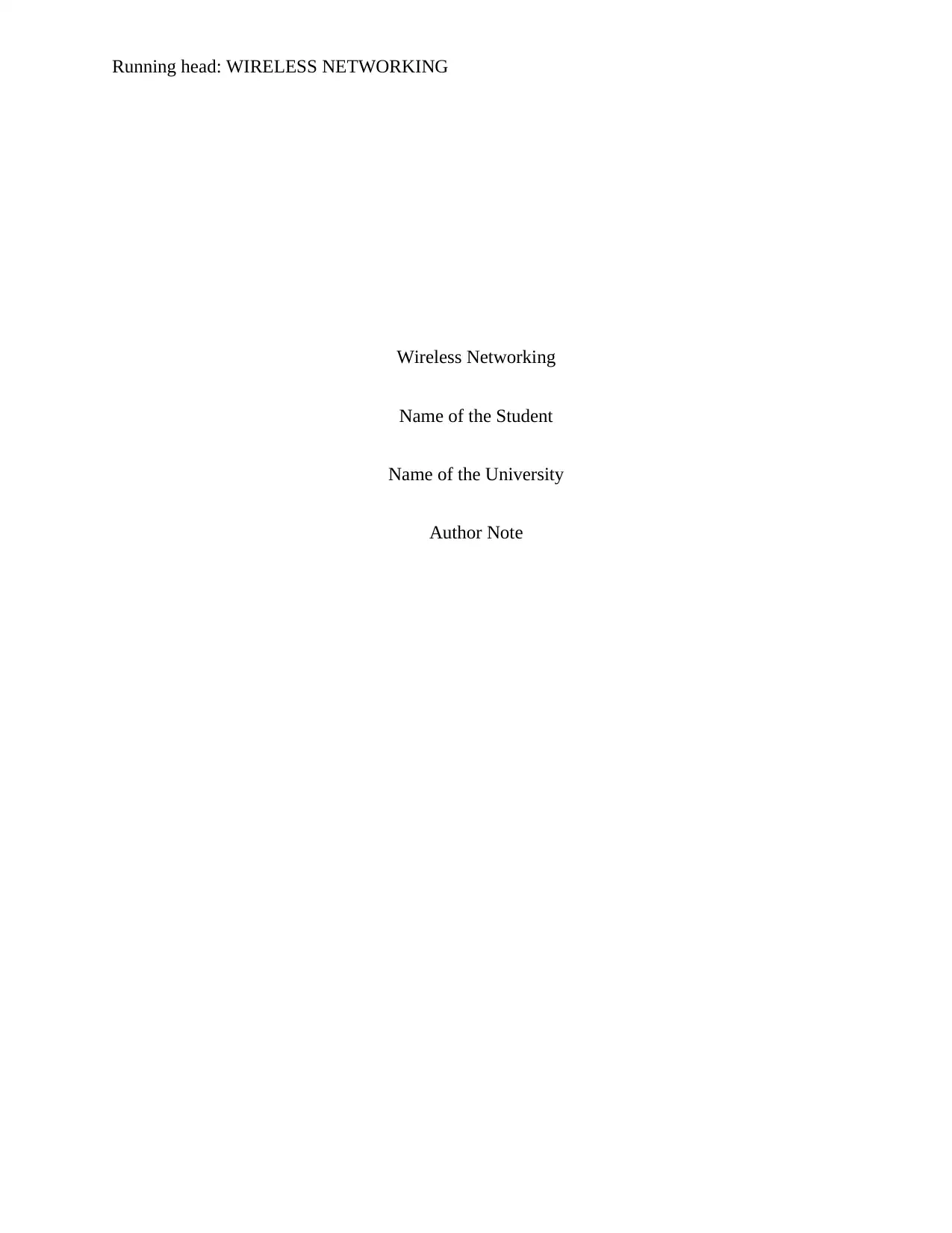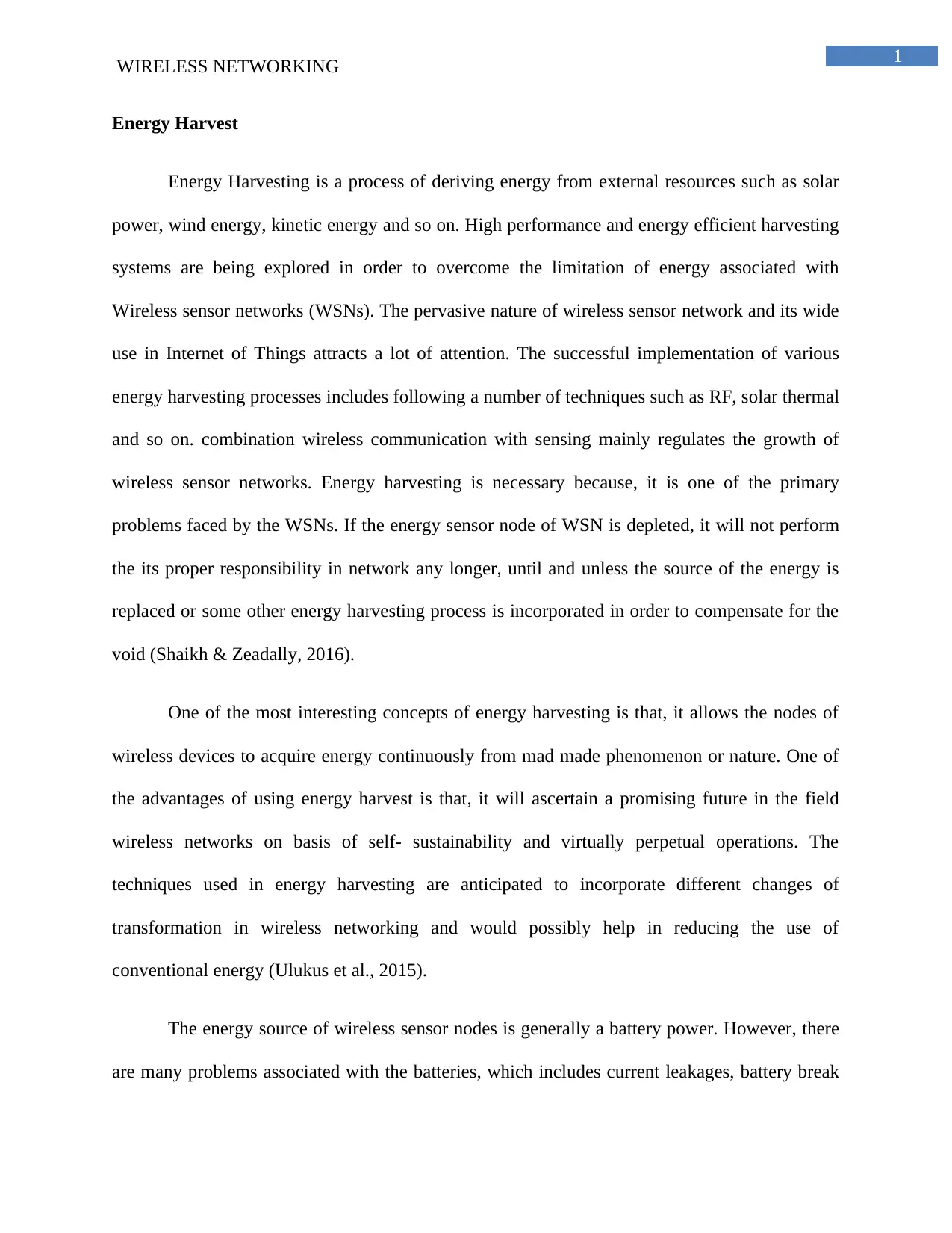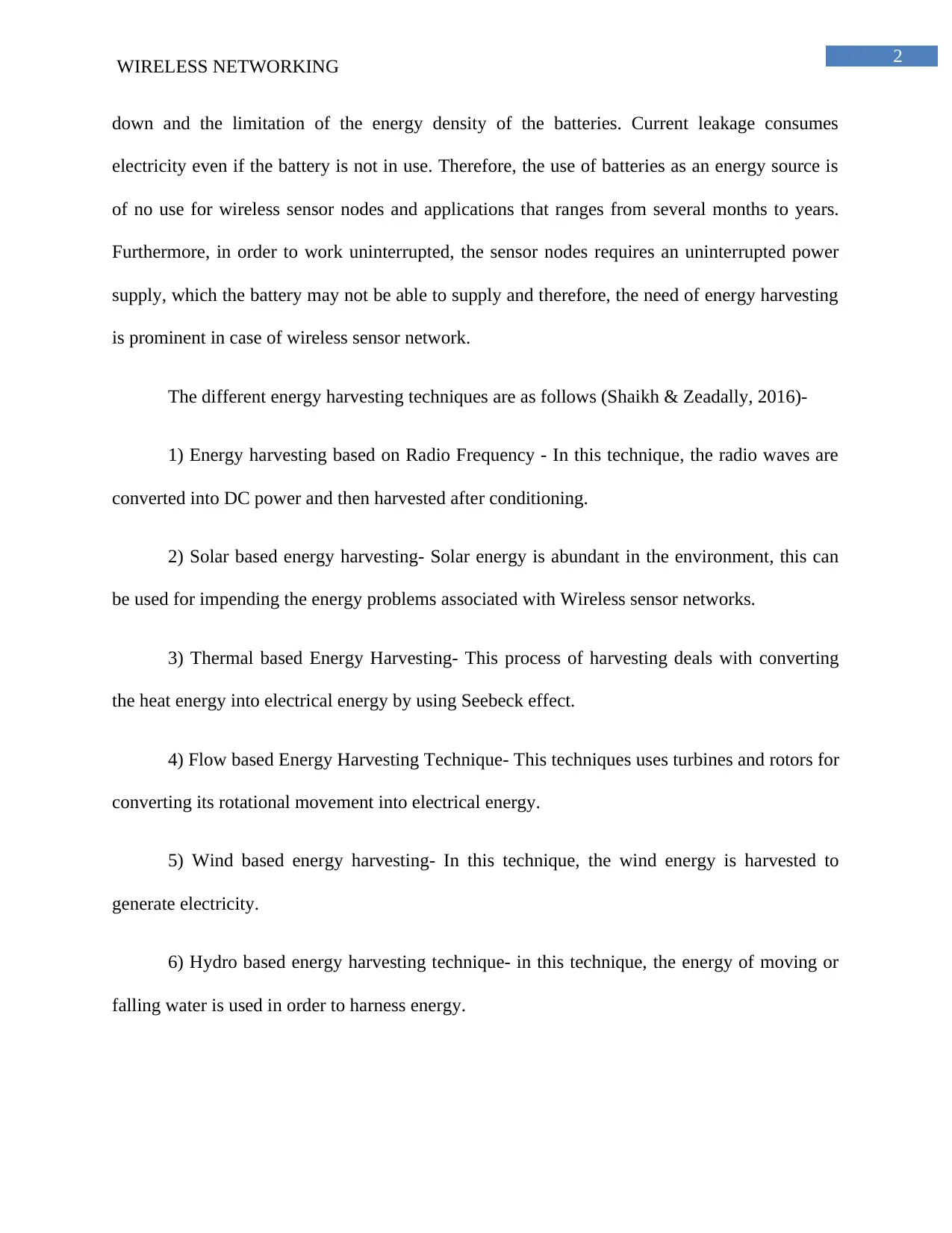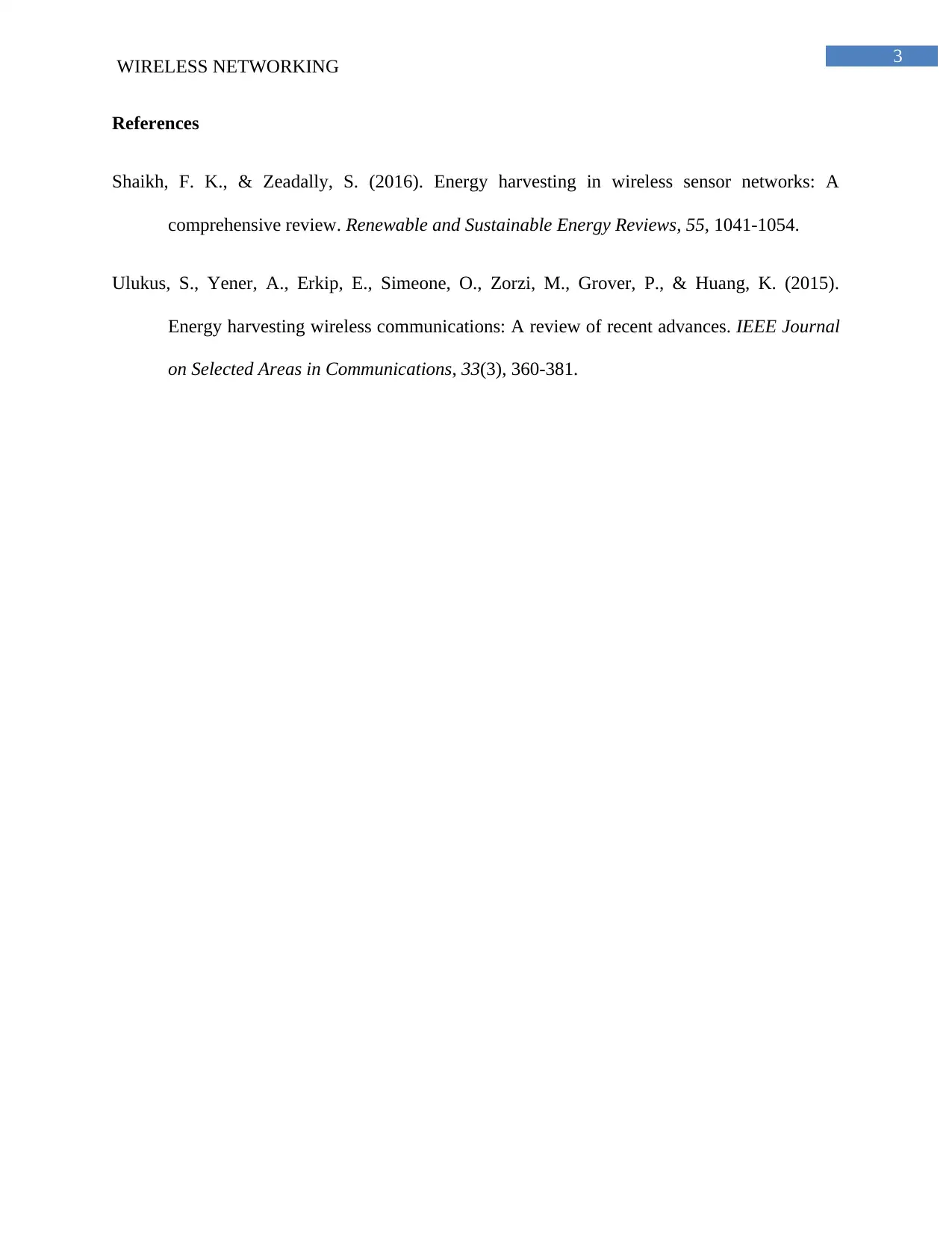Energy Harvesting and Wireless Networking: A Detailed Report
VerifiedAdded on 2019/10/31
|4
|688
|153
Report
AI Summary
This report delves into the crucial topic of energy harvesting within wireless networks, addressing the limitations of traditional battery power. The report highlights the significance of energy harvesting for the continuous operation of wireless sensor networks (WSNs) and the growing demand for self-sustaining systems. It explores various energy harvesting techniques, including RF harvesting, solar energy, thermal energy, flow-based, wind-based, and hydro-based methods. The document emphasizes the conversion of environmental energy into electrical power to overcome the challenges associated with battery life, current leakages, and the need for uninterrupted power. The report provides an overview of each technique, making it a valuable resource for understanding sustainable energy solutions in wireless communication.
1 out of 4











![[object Object]](/_next/static/media/star-bottom.7253800d.svg)